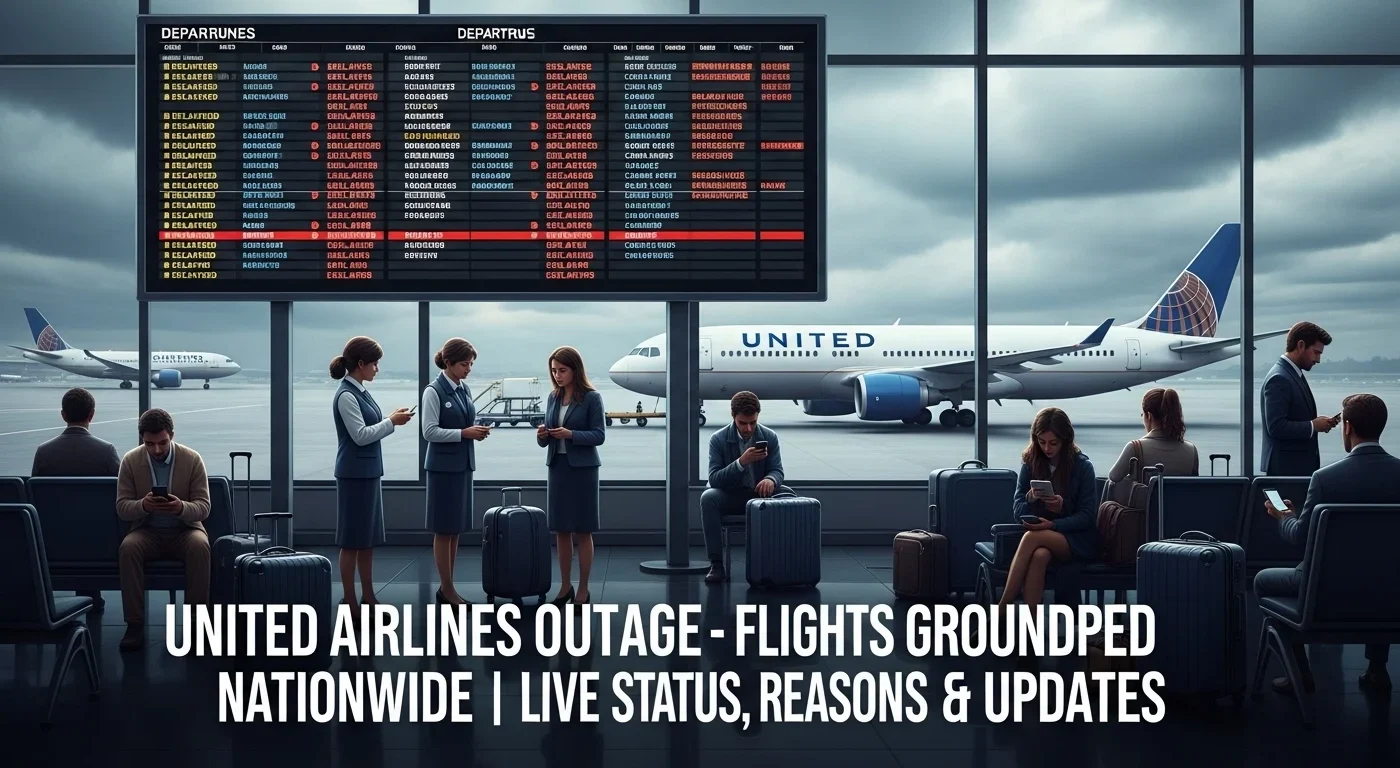In a major disruption that impacted thousands of passengers across the U.S., United Airlines experienced a widespread IT system outage on [insert date], resulting in a temporary nationwide ground stop of all its flights. The incident has raised serious concerns about the airline’s technological resilience and sparked conversations about the FAA’s emergency response capabilities in such scenarios.
What Caused the United Airlines Grounding?
The issue began mid-morning, with increasing reports of delays at major airports like Newark (EWR), Chicago O’Hare (ORD), and Denver International (DEN). By noon, United Airlines confirmed a systemwide technical issue, leading to the temporary grounding of all United flights across the United States.
The Federal Aviation Administration (FAA) stated that the ground stop was initiated at the airline’s request — not due to any regulatory mandate. According to initial reports, the cause was a critical IT system failure affecting flight planning, dispatch, and communication networks.
What Is a Ground Stop?
A ground stop is an emergency aviation measure where aircraft departures are paused for safety reasons. In United’s case, the stop was applied nationwide. Flights already in the air continued to their destinations, but all scheduled take-offs were halted until the issue was resolved.
The outage severely impacted operations at several major U.S. airports, including:
- Newark Liberty International Airport (EWR)
- Chicago O’Hare International Airport (ORD)
- Denver International Airport (DEN)
- San Francisco International Airport (SFO)
How Many Flights Were Pretentious ?
According to FAA and airline data:
- 300+ United flights were delayed
- 60+ flights were outright cancelled
- Thousands of passengers faced travel disruptions
Travelers checking the United Airlines flight status through the app or website encountered glitches, outdated data, or complete outages, which added to the chaos.
Why Did the System Outage Happen?
United Airlines cited the incident as a “systemwide IT outage.” While the airline has not disclosed the exact cause, industry insiders suspect server issues or software updates may have triggered the breakdown.
This is not the first such incident — United has faced multiple IT disruptions in the past decade, indicating a deeper need for robust, fail-safe tech infrastructure in aviation.
United Airlines’ Official Response
United quickly acknowledged the problem via social media:
“We are experiencing a systemwide technical issue and have temporarily paused all departures. We are working to resolve this issue and will provide updates as soon as possible.”
After about two hours, departures resumed, but delays and rescheduling continued throughout the day. Many passengers remained grounded or missed connecting flights.
Impact on Travelers & Airports
The scene at airports like Newark and Chicago O’Hare was one of long lines, confusion, and limited communication. Passengers expressed frustration over the lack of updates and vague rebooking procedures.
Some firsthand accounts:
- “I missed my job interview in Dallas because of this delay.
- “We got a $10 food voucher, but no flight info,” said another traveler at O’Hare.
In some cases, even automated kiosks and boarding systems were offline, leaving airport staff overwhelmed.
FAA’s Role and Industry Reactions
The FAA clarified that United itself requested the ground stop and that there were no federal safety issues. However, experts say this incident underscores the growing dependency on IT systems and the need for stronger FAA oversight.
“Airlines need to stress-test their systems regularly,” said Greg Martin, a former FAA spokesperson. “Redundancy and real-time recovery protocols are no longer optional.”
Are Other Airlines at Risk?
Yes. United’s outage is part of a wider trend in aviation. Just this year, American Airlines and Delta also experienced similar disruptions due to unrelated tech failures.
As airlines digitize everything from check-in to cockpit systems, any system flaw can result in massive service breakdowns, affecting safety, scheduling, and customer trust.
What To Do If You Were Affected
If you were one of the many travelers impacted by the United Airlines outage, here’s what you can do:
1. Check United Flight Status
- Use the United Airlines app or website (when functional)
- Use third-party apps like FlightAware for real-time tracking
2. Know Your Rights
- Request compensation like meal vouchers, rebooking, or refunds
- Keep receipts and boarding passes for claims
3. Stay Updated
- Follow United Airlines News on X (Twitter), Facebook, and the official newsroom
- Monitor airport displays and announcements
4. File a Complaint
- If your travel experience was mishandled, you can lodge a formal complaint with the U.S. Department of Transportation (DOT) or via United’s customer service portal.
Key Lessons from the United Outage
This incident serves as a wake-up call for the aviation industry. With flights becoming more technology-reliant, airlines must invest heavily in digital resilience.
For United Airlines, the outage was a major operational and reputational setback. For travelers, it was a day of missed opportunities and heightened stress. For regulators, it’s a call to tighten IT compliance standards for airlines.
Conclusion
The United Airlines system outage of [insert date] disrupted air travel across the country and exposed the vulnerabilities in airline IT systems. While operations have resumed, the aftershocks will linger — in customer complaints, regulatory reviews, and corporate boardrooms.
Airlines must ensure their systems are not just efficient, but secure, tested, and built for failure recovery. Until then, passengers remain at the mercy of machines — and the next glitch might just be a flight away.
Also Read: How ChatGPT Broke My Brain (And Why I Still Use It Every Day)


